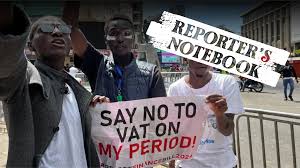The Kenyan government has announced a major change in its financial plans by cutting down its revenue target in the 2025 Finance Bill by Ksh314 billion. This decision comes after massive protests led mostly by young people, popularly known as Gen Z, who stormed the streets of Nairobi and other major cities to oppose what they described as unfair and oppressive tax proposals.
The Finance Bill 2025 initially contained several new tax policies designed to help the government raise more money. These proposals were part of the government’s Medium-Term Revenue Strategy (MTRS), which is being supported by the International Monetary Fund (IMF). The IMF had recommended that Kenya increase its tax-to-GDP ratio from around 13.5 percent to 20 percent within three years. However, as soon as the new taxes were made public, thousands of young Kenyans took to social media and then to the streets, demanding the bill be dropped.
The protests started online on platforms like TikTok and X (formerly Twitter), but soon turned into large street demonstrations in cities like Nairobi, Mombasa, Kisumu, and Eldoret. Protesters blocked roads, set fires, and clashed with police officers. Over 200 people were reported injured, and one protester was killed in Nairobi near the National Assembly.
President William Ruto, reacting to the growing pressure and public anger, addressed the nation on June 28, 2024. He announced that some parts of the Finance Bill would be dropped and ordered a major cut in both national and county government spending. The total reduction in spending was Ksh346 billion, affecting key government institutions like the Executive, Parliament, Judiciary, and independent commissions.
Later on, the Cabinet Secretary for Treasury and Planning, Prof. Njuguna Ndung’u, confirmed that the revenue target of the Finance Bill would be reduced by Ksh314 billion. He explained that this decision was necessary due to the withdrawal of unpopular tax measures and to avoid further public unrest. He added that the government would still stick to responsible financial management, even with the lower revenue projection.
This significant drop in expected revenue could affect many areas of the national budget. Experts have warned that the shortfall might delay important development projects in sectors like healthcare, education, infrastructure, and social welfare. The move may also complicate ongoing talks with the IMF concerning Kenya’s debt restructuring programme.
With fewer taxes now expected, the government may have to look for other ways to raise funds. Some of the options being discussed include borrowing more money, cutting spending on non-essential projects, or increasing user fees for public services. There is also talk of encouraging public-private partnerships (PPPs) to support critical infrastructure projects.
Although the protests have calmed down, the Kenyan youth, especially Gen Z activists, are still paying close attention to what the government does next. Many of them have said they will not stop demanding transparency and better governance. Some youth-led groups are even pushing for a larger role in shaping national policies, especially the budget.
The Finance Bill 2025 is still being debated in Parliament. Lawmakers are now under pressure to find a balance between raising funds for national development and listening to the voice of the people. Some proposals under consideration include delaying large capital projects, cutting wasteful spending, or introducing modest excise taxes that do not affect low-income earners.
Political analysts believe the recent events have marked a turning point in Kenyan politics. The power of digital mobilisation by young people has forced the government to rethink its approach. According to one political commentator, the Gen Z protests “have reminded everyone that democracy is not just about elections, but also about listening to the people every day.”
As the country looks ahead, both the government and civil society are expected to work more closely to ensure that future tax policies are fair, inclusive, and sustainable. It remains to be seen how the government will fill the funding gap while keeping its promises to avoid burdening ordinary Kenyans.
